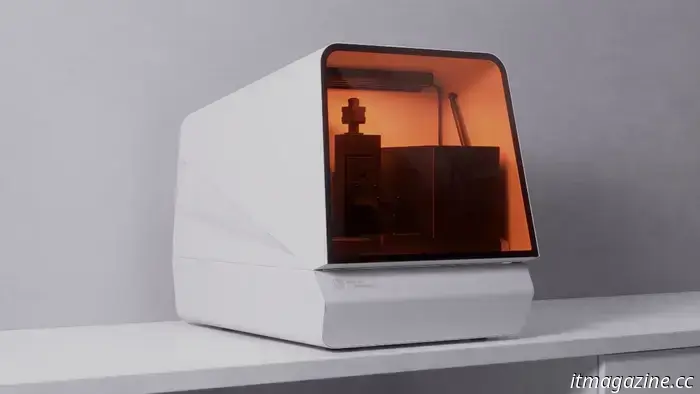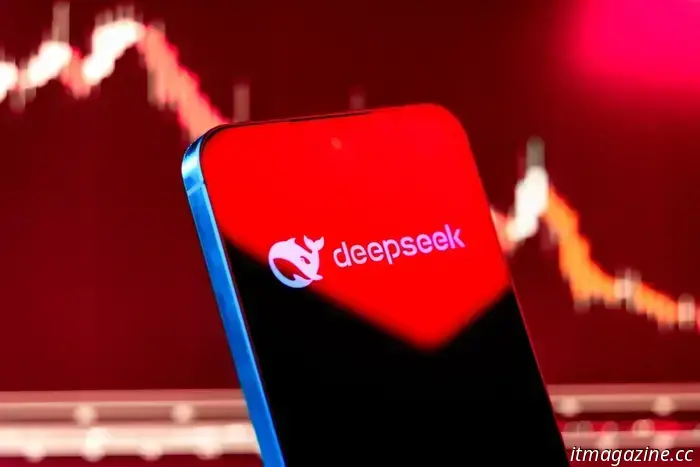
Startup working on skin regeneration states that bioprinted organs are "10–15 years away."
Lithuanian startup Vital3D predicts that human organs could be bioprinted for transplants within the next decade. However, before producing human hearts and kidneys, the company is beginning with a more straightforward task: regenerating skin for dogs.
Located in Vilnius, Vital3D is already engaged in bioprinting functional tissue constructs. Utilizing a proprietary laser system, the startup deposits living cells and biomaterials into precise 3D configurations. These structures replicate natural biological systems and may eventually lead to the creation of entire organs customized to a patient’s specific anatomy.
This goal is both professional and personal for CEO Vidmantas Šakalys. Following the loss of a mentor to urinary cancer, he is dedicated to developing 3D-printed kidneys that could prevent others from experiencing a similar fate. However, before reaching that milestone, the company must establish a commercial product to finance the lengthy journey ahead.
The proposed product is VitalHeal — the first bioprinted wound patch for pets. The initial focus is on dogs, with plans for human applications to follow.
Šakalys describes the patch as “a first step” towards creating bioprinted kidneys. “Printing organs for transplantation presents significant challenges,” he explains to TNW after a lab tour. “It is a task that may take 10 to 15 years, so as a commercial entity, we need to provide products that are available sooner. Hence, we commence with simpler products and gradually advance to more complex ones.”
While the goal may seem straightforward, the technology itself is complex.
VitalHeal features growth factors that enhance skin regeneration. Tiny pores on the patch’s surface—each about one-fifth the width of a human hair—allow for air circulation while preventing bacteria. When applied, VitalHeal seals the wound and applies consistent pressure as the growth factors take effect.
According to Vital3D, the patch can reduce healing time from 10–12 weeks to just four to six weeks. Additionally, the infection risk can decrease from 30% to below 10%, the number of veterinary visits can drop from eight to two or three, and surgical times can be cut by half.
The startup contends that current treatments can be expensive, ineffective, and stressful for animals. VitalHeal aims to provide a safer, quicker, and more affordable alternative.
The market potential is substantial, as supported by data. Vital3D’s FemtoBrush system is claimed to enable rapid and precise bioprinting.
Commercial outlook
The global animal wound care market is anticipated to expand from $1.4 billion (€1.24 billion) in 2024 to $2.1 billion (€1.87 billion) by 2030, driven by increasing pet ownership and a growing demand for sophisticated veterinary care. Vital3D estimates an initial serviceable addressable market (ISAM) of €76.5 million across the EU and US. By 2027-2028, the company aims to sell 100,000 units.
Dogs make a logical initial target due to their size, activity levels, and surgical needs, which heighten their risk of wounds. Additionally, about half of dogs over the age of 10 are affected by cancer, further elevating the necessity for effective wound care solutions.
Priced at €300 retail (or €150 wholesale), the patches may not be inexpensive. However, Vital3D asserts they could reduce treatment costs for pet owners from €3,000 to €1,500, with production at scale expected to further decrease prices.
Following promising results in rats, trials on dogs are set to commence this summer in clinics in Lithuania and the UK, which are Vital3D’s pilot markets.
If all goes well, a non-degradable patch is projected to launch in Europe next year, followed by a biodegradable version.
The company also plans to modify its technology for human applications, initially targeting wound care for individuals with diabetes, 25% of whom experience impaired healing. Future iterations could assist burn victims, injured soldiers, and others needing advanced skin restoration.
Vital3D is also investigating additional medical opportunities. In collaboration with Lithuania’s National Cancer Institute, the startup is creating organoids—miniature organ models—for cancer drug testing. Another initiative involves bioprinted stents, which show promise in early animal studies. All these projects contribute to a larger mission.
“Our ultimate goal is to transition to organ printing for transplants,” states Šakalys.
Bioprinting organs
Trained as a computer engineer, Šakalys has spent over a decade working with photonic technologies.
At his prior startup, Femtika, he utilized lasers to create small components for microelectronics, medical devices, and aerospace applications. He realized that these lasers could also facilitate accurate bioprinting.
In 2021, he co-founded Vital3D to further this vision. The company’s printing system directs light onto a photosensitive bio-ink, solidifying it into a structure while


Other articles
 5 methods through which the EU’s ambitious new startup strategy might enhance its technology ecosystem.
The European Commission has announced ambitious initiatives aimed at reducing bureaucracy and enhancing the EU's appeal for startups to grow.
5 methods through which the EU’s ambitious new startup strategy might enhance its technology ecosystem.
The European Commission has announced ambitious initiatives aimed at reducing bureaucracy and enhancing the EU's appeal for startups to grow.
 ‘Limited evidence’ that EU regulations facilitated criminals in cryptocurrency kidnappings.
As anxiety permeates France's cryptocurrency community, certain industry leaders claim that the EU's regulations put holders at increased risk.
‘Limited evidence’ that EU regulations facilitated criminals in cryptocurrency kidnappings.
As anxiety permeates France's cryptocurrency community, certain industry leaders claim that the EU's regulations put holders at increased risk.
 Sales of realme 14 and 14T have started in Russia
Realme has returned with new smartphone models — realme 14 5G and realme 14T 5G. Smartphones can already be found in stores all over Russia. Both devices are about power, long—term operation without an outlet and a bit of futurism in design.
Sales of realme 14 and 14T have started in Russia
Realme has returned with new smartphone models — realme 14 5G and realme 14T 5G. Smartphones can already be found in stores all over Russia. Both devices are about power, long—term operation without an outlet and a bit of futurism in design.
 BEYOND Expo 2025: NIP Group CEO Mario Ho observes a transition from esports' "winter" to a period of change.
On May 24, during the BEYOND Expo 2025 in Macao, NIP Group CEO Mario Ho spoke to share his views on the development of the esports sector. At the
BEYOND Expo 2025: NIP Group CEO Mario Ho observes a transition from esports' "winter" to a period of change.
On May 24, during the BEYOND Expo 2025 in Macao, NIP Group CEO Mario Ho spoke to share his views on the development of the esports sector. At the
 DeepSeek quietly rolled out an updated AI model
While major American IT companies are competing in the number of zeros in their AI development budgets, China's DeepSeek has decided to surprise everyone again. Without presentations, fanfare, or Elon Musk, she just posted a new version of her DeepSeek R1 reasoning model on Hugging Face. Quiet, calm, in Chinese.
DeepSeek quietly rolled out an updated AI model
While major American IT companies are competing in the number of zeros in their AI development budgets, China's DeepSeek has decided to surprise everyone again. Without presentations, fanfare, or Elon Musk, she just posted a new version of her DeepSeek R1 reasoning model on Hugging Face. Quiet, calm, in Chinese.
Startup working on skin regeneration states that bioprinted organs are "10–15 years away."
A biotech startup claims that human organs may be bioprinted within a decade. However, the initial focus of the company is on regenerating skin for dogs.
